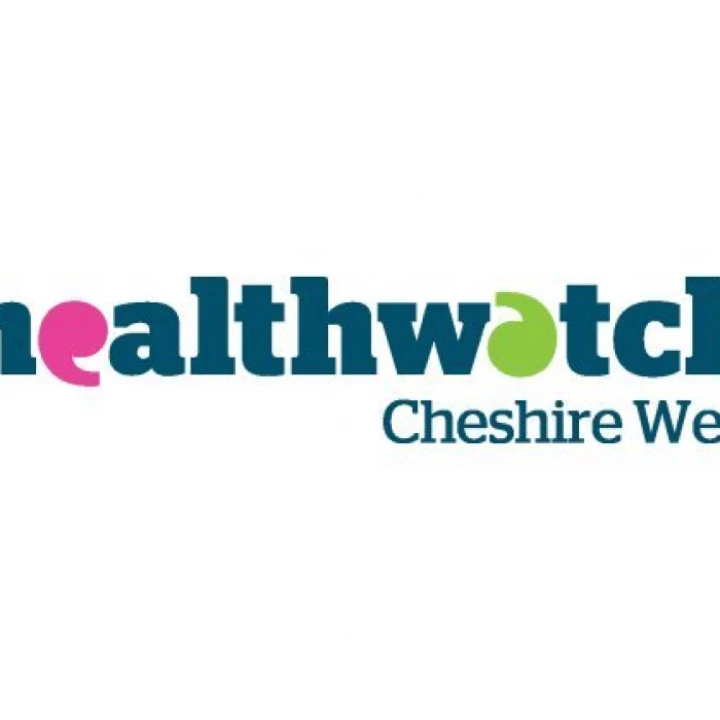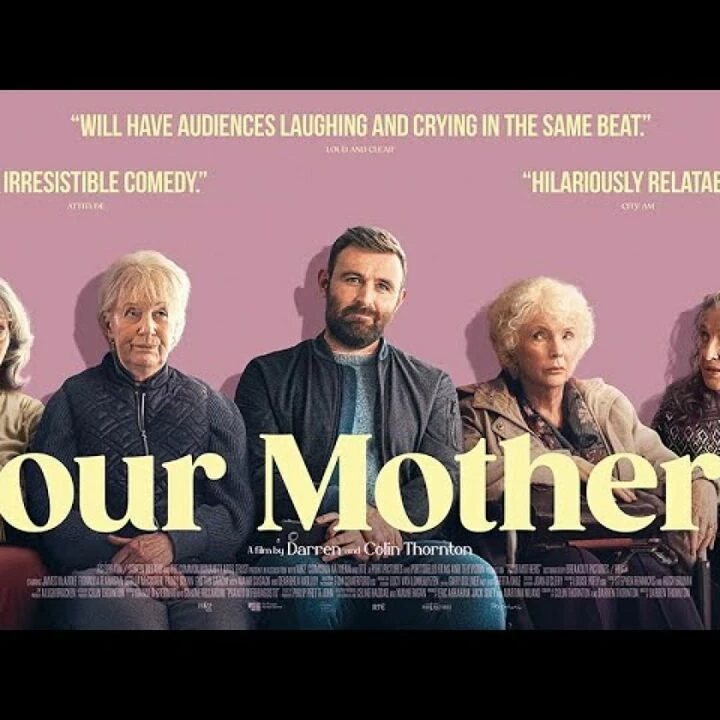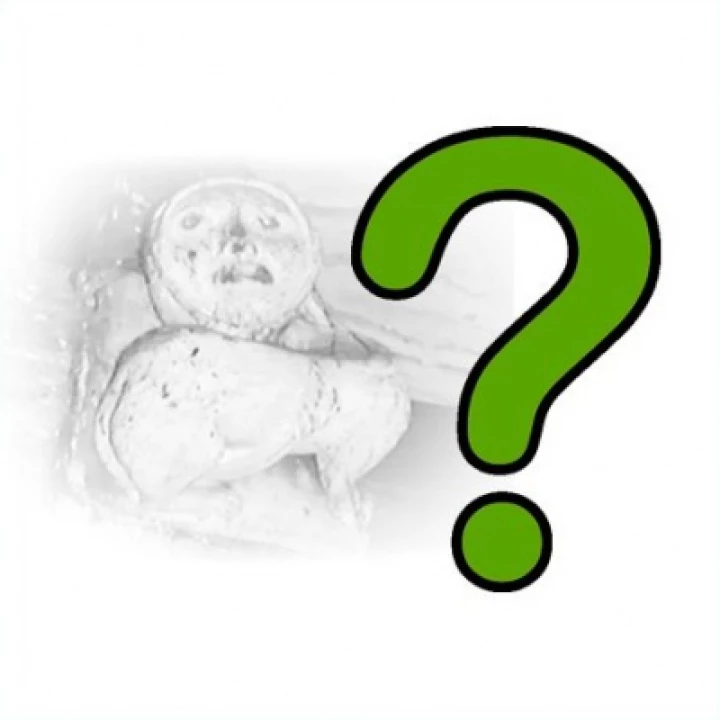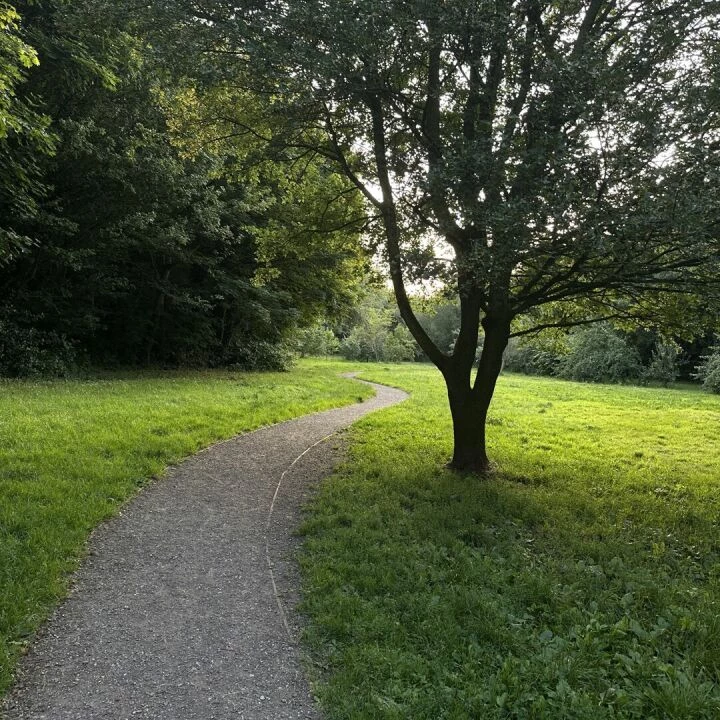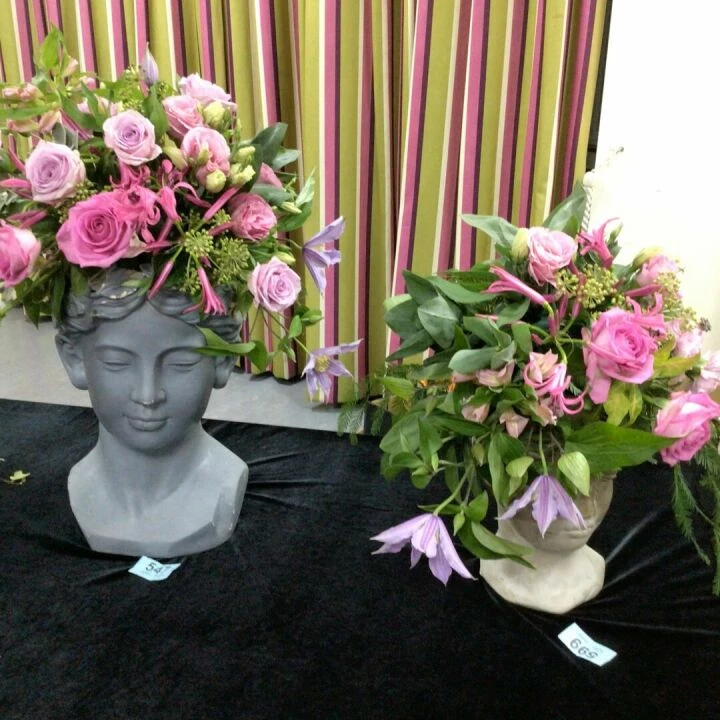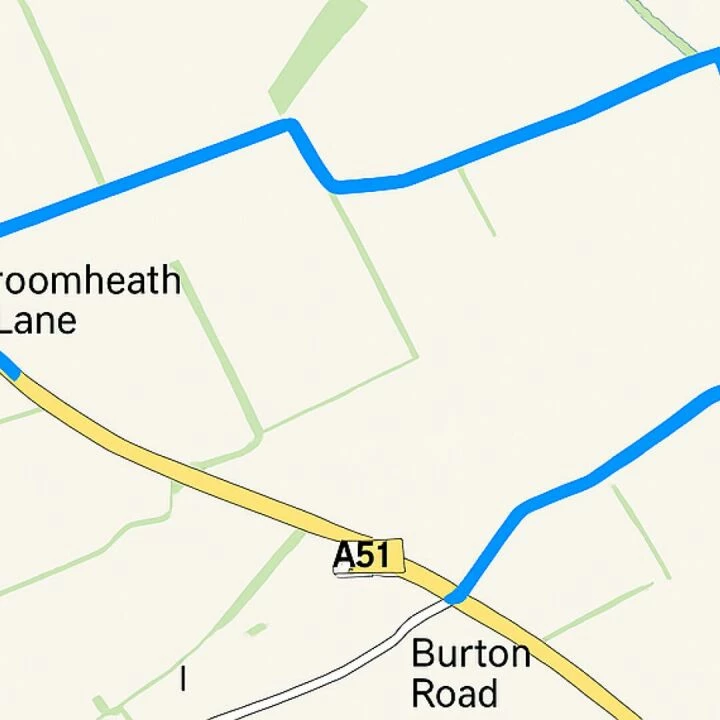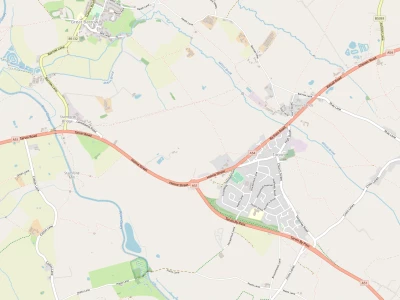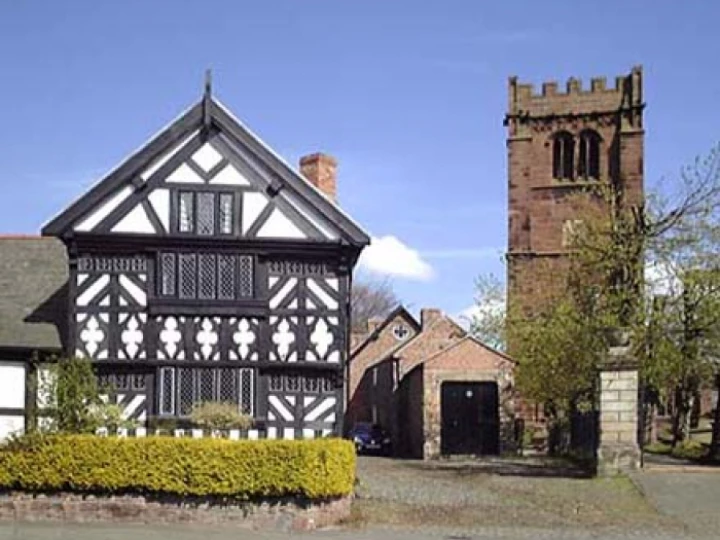
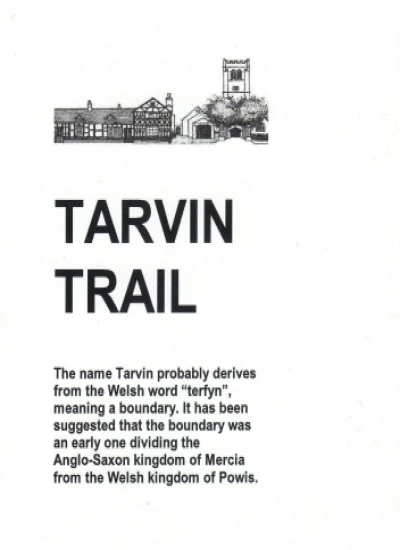
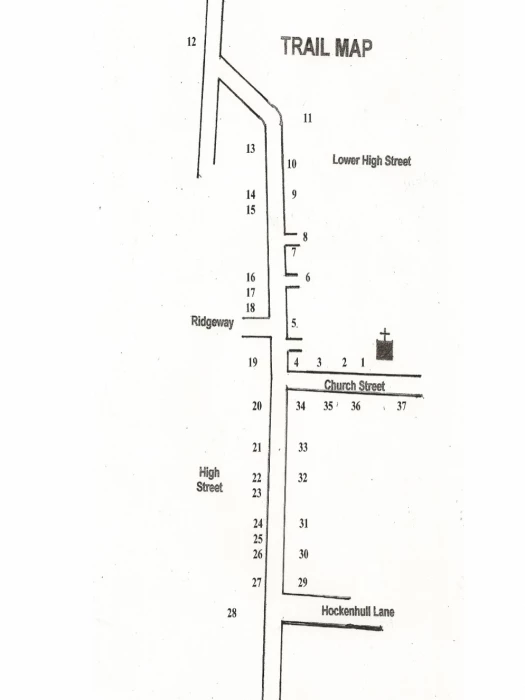

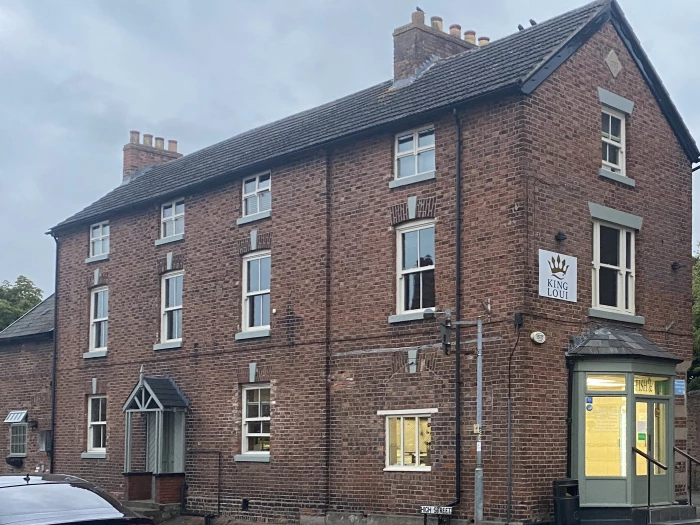
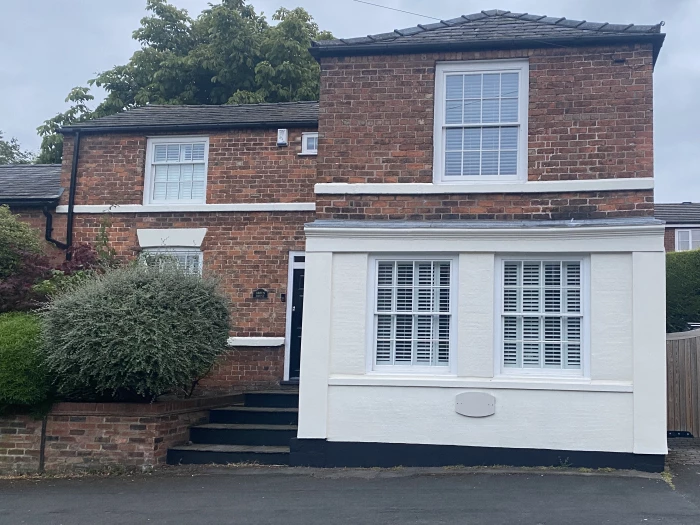
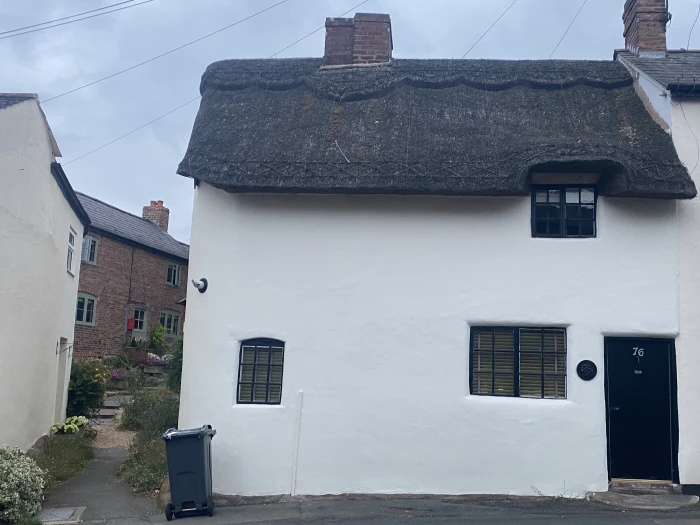
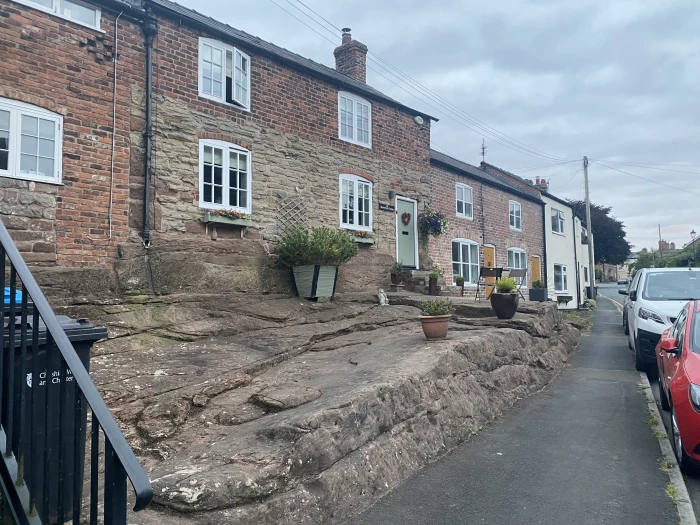
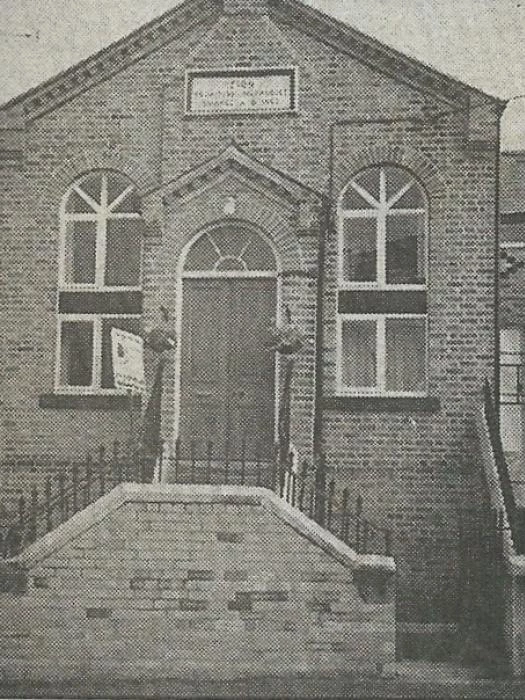

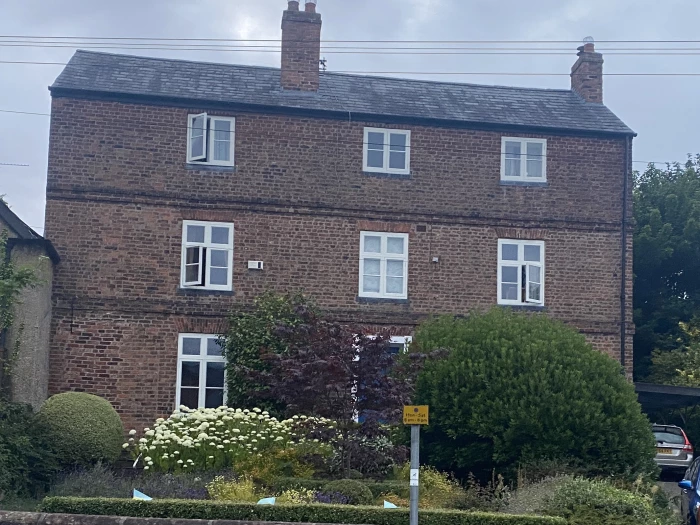
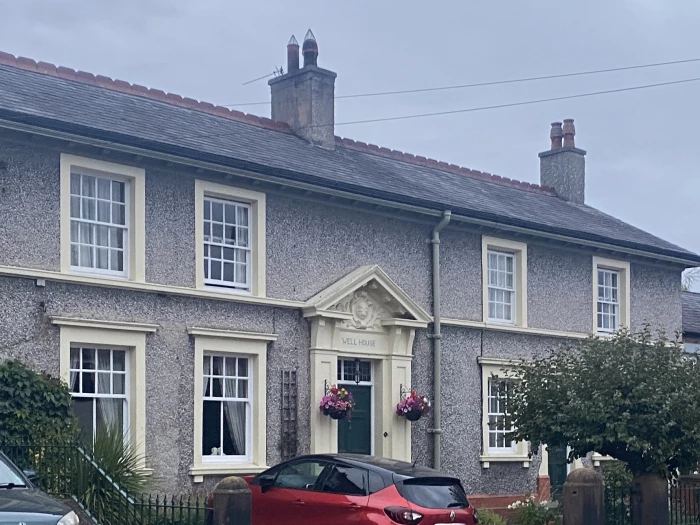
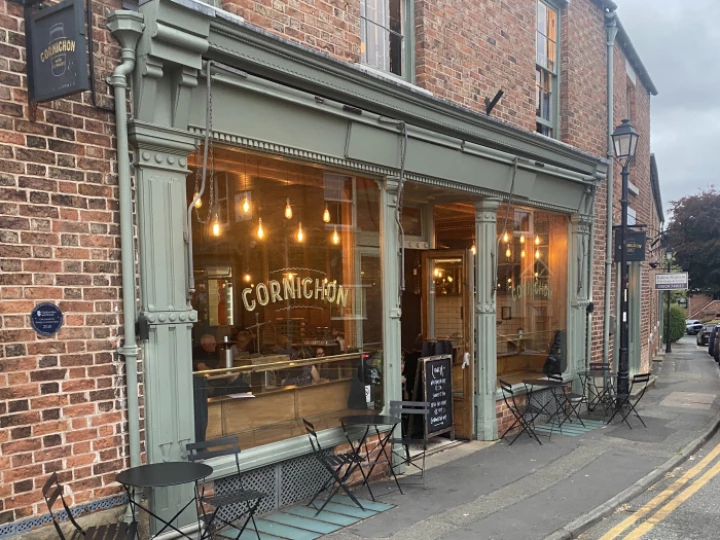
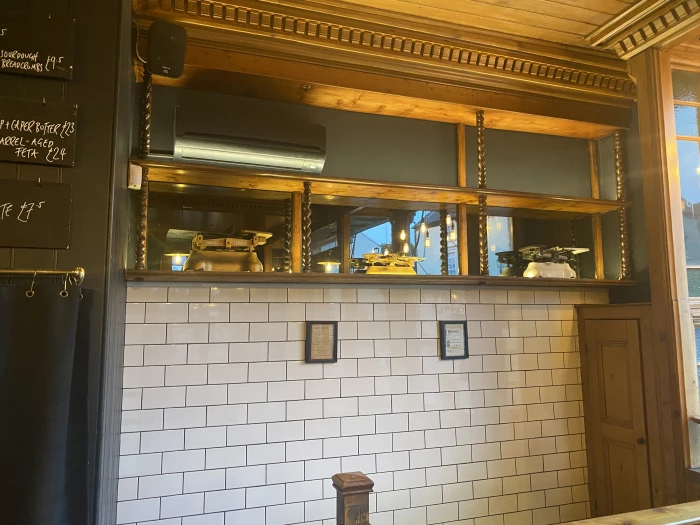
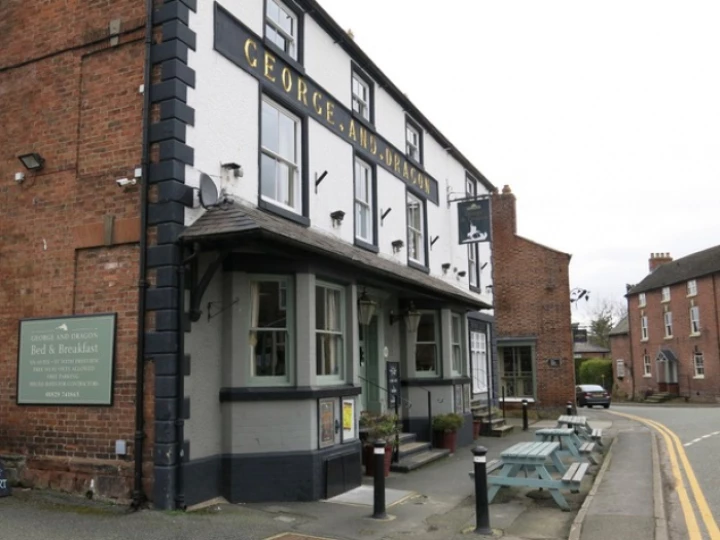
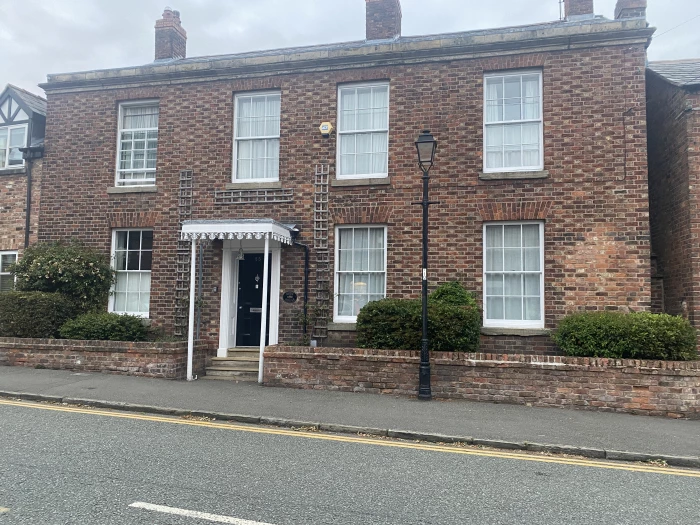
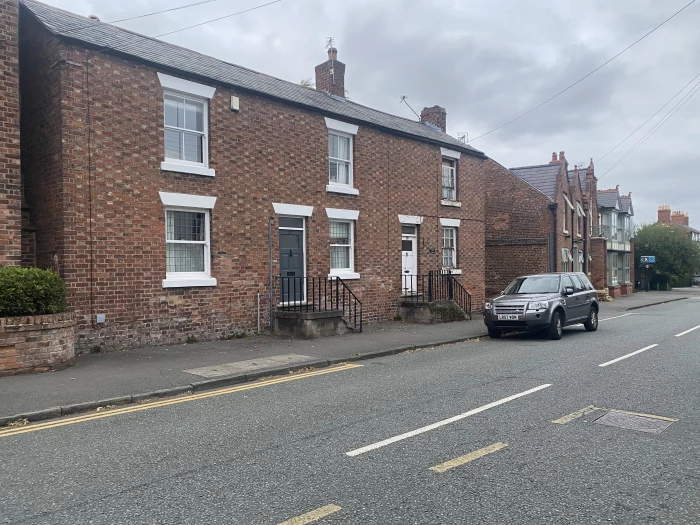
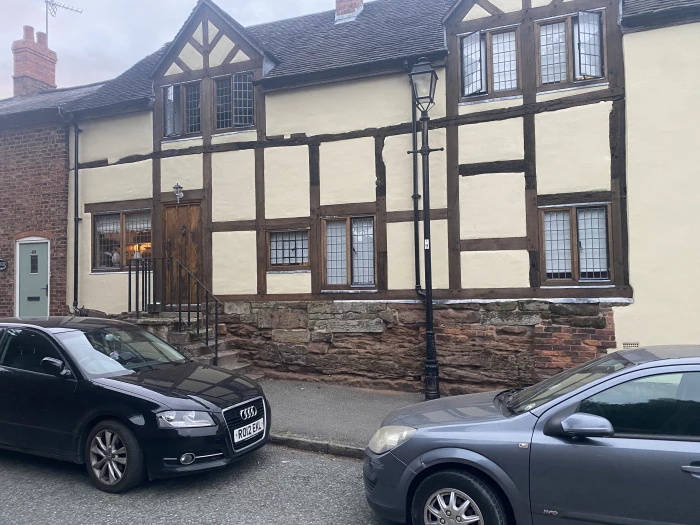
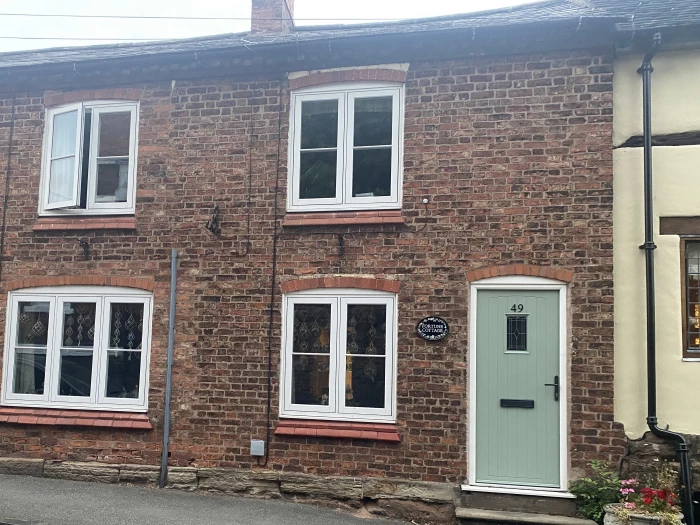
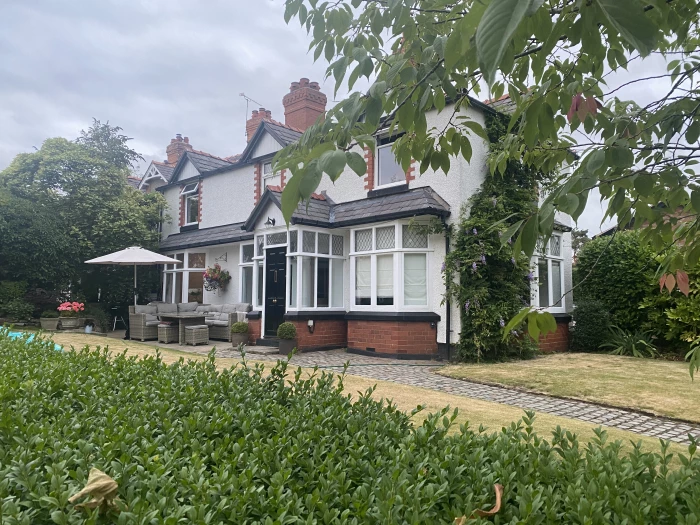

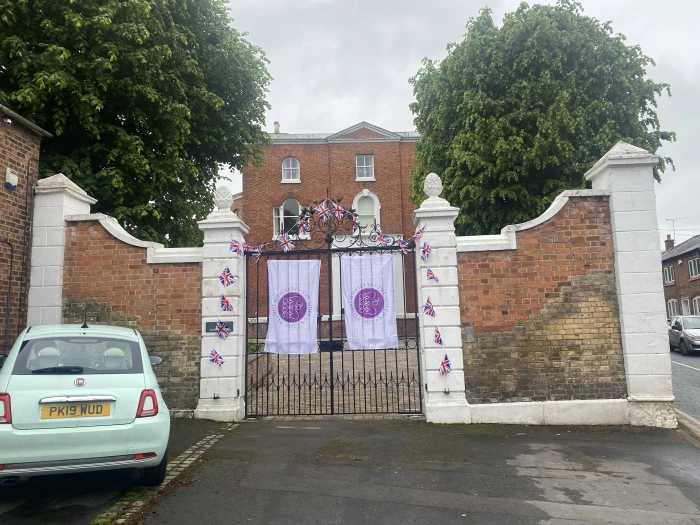

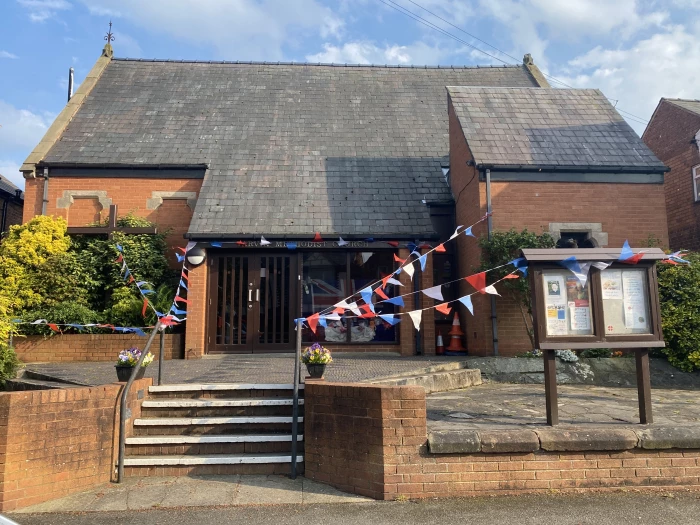
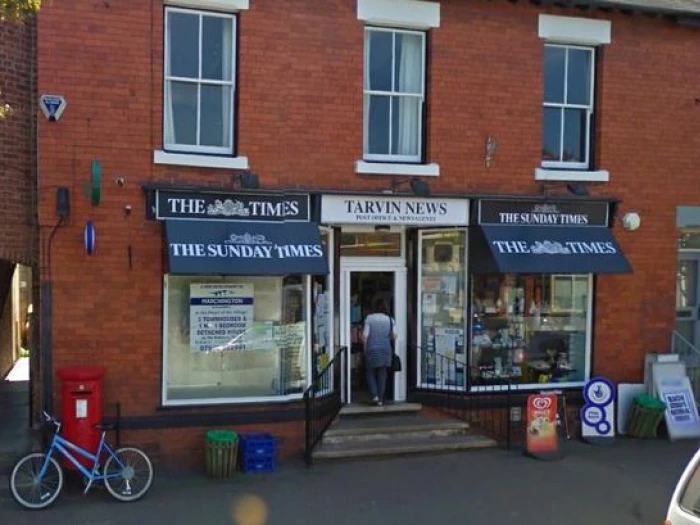
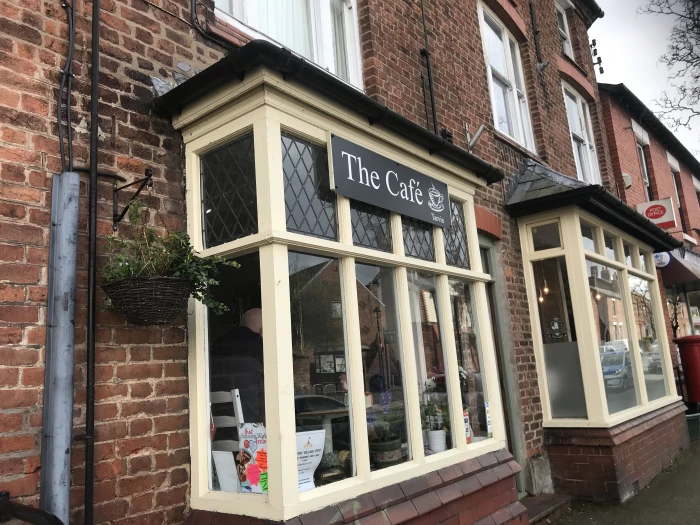

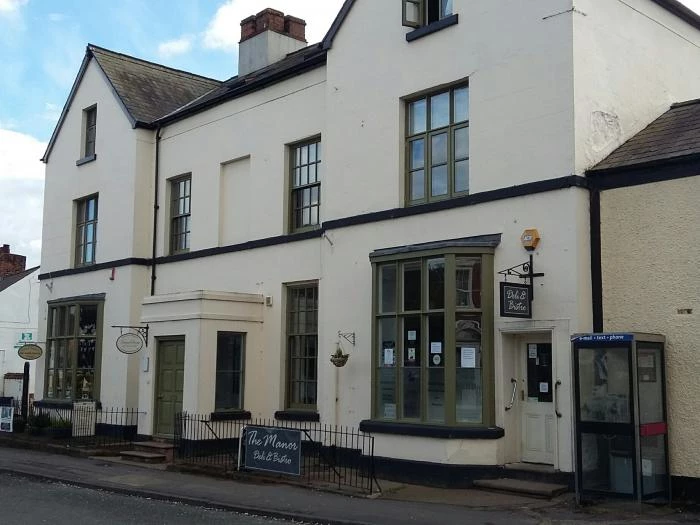
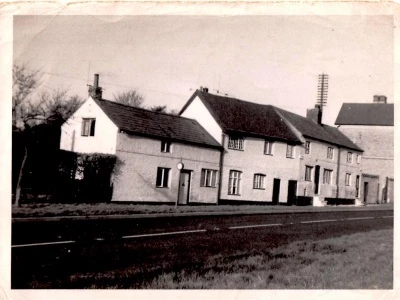
The name Tarvin probably derives.from the Welsh word "terfyn", meaning a boundary. It has been suggested that the boundary was an early one dividing the Anglo-Saxon kingdom of Mercia from the Welsh kingdom of Powis.
The Tarvin Trail was compiled by Tarvin Local History Group in 1998 and was revised in 2010 and 2014 by Tarvin Local History Group and Tarvin Civic Trust. It is intended as a brief guide to Tarvin Village Centre, which was designated as a Conservation Area in 1973. It has now been revised again by Tarvin Online together with Margaret Dixon, formerly of Tarvin Local History group.
A PDF copy of the tarvin Trail can be downloaded here (see Adobe icon below the last image) and is available in the history section of the web site menu. Hard Copies are available at Tarvin News and post office.
Tarvin Trail
1. St Andrew's Church Grade I listed
The church is listed as Grade One for its architectural merit and historical interest, With earliest parts dating from the 14th century. (A full guide is available from the Church.)
The Grade II listed building to the left of the church was the Hearse House and the former Tarvin Grammar School, founded in about 1600 by John Pickering, where later, John Thomasen, "transcriber for Queen Anne" and "the finest penman in England", was the schoolmaster. He died in 1740. The Grammar School finally closed in 1939 and formal schooling in the building eventually ended shortly after the Second World War. The building was repaired and refurbished in 1997 for use as the St Andrew's Parish Rooms.
2. Church House & Church Cottage Grade II listed
These buildings date from the 16th century and are two of the oldest in Tarvin. They survived the fire of 30th April 1752, which destroyed most of the village buildings. Church House is of timber frame construction with wattle and daub infill and was once thatched. Inside are stone fireplaces with carved coats of arms. The building, thought to have been the vicarage until 1790, was restored by the Chester Historic Buildings Preservation Trust in 1991.
3. The Flaggs and Hamilton House Grade II* listed
These houses are Georgian with a date of 1756 visible behind the rainwater head. It is believed that some of the charred timbers from houses damaged in the 1752 fire were used in their construction. The houses have pediments of different styles above the doorways. The Flaggs was used as a girls' school early in the 20th century.
4. 54 High Street – King Louis Fish and Chip Shop Grade II listed
At one time, this building was a third public house in Tarvin, called the Bull's Head. The date stone on the gable end is now barely readable but once bore the inscription 'I SADLER 1753'. Later, a Mrs Bull used the building as Tea Rooms.
A public water pump, known as Middle Pump, was located in the centre of the road junction. Facing king Loui's and The Red Lion pub
5. Arden House No 58 Lower High St
Built in 1890 and formerly occupied by a small business where the Misses Arden sold cotton and ribbons. From 1941 until 1990, the premises housed a printing shop.
6. Former National School approached along path between Nos 68 and 72
The school was built in 1859, at a cost of £1,077, of which £679.10s.5d was raised by public subscription. The architect was James Harrison of Chester. The school closed in 1985 and is now a private residence. A newer private residence has been built on the old playground to the right of the driveway.
7. Cottage No 76-Grade II listed
This cottage was built in 1601 of rendered rubble stone and stands on solid Bunter sandstone. The building was restored and the roof re-thatched in 2006.
8. Cottages 78 – 86A
The narrow track between house Nos 76 and 82 leads to an alley or courtyard, which contained a smithy noted on the 1874 map and has two late 18th century Grade II listed cottages Nos 78 & 80.
Back on High Street, Sandstone Cottage and the residential conversion of its attached shippon, Nos 86 & 86A, are both Grade II listed and were constructed in the late 17th/early 18th century, high on the outcrop of underlying Bunter sandstone.
9. Zion Primitive Methodist Chapel
The chapel was built in 1865 on the site where open-air meetings were previously held on "The Rock". It was closed in 1985 and has been converted into two private dwellings.
10. Rimmer's Row Terrace Nos 92 – 106
These Victorian cottages, named after their constructor, James Rimmer, were threatened with demolition but were renovated in 1975/76, as a result of a campaign by Tarvin Civic Trust.
11. Pool Bank Park
This land was the site of a dairy from the 1920s, when the well known Tarvin resident, "GB" Radcliffe, obtained the first licence in Cheshire for the pasteurisation of milk and built his Pool Bank Dairy, which he sold to the Express Dairy Company in 1947. The dairy finally closed in 1995 and is now a business park.
The village's lower water pump was sited on the right hand side of the driveway leading to these premises.
12. Tarvin Mill and By-pass
The mill was built in the early 18th century on the site of a 13th century mill. The large area between the building and the A54 main road was once the millpond. The sandstone wall along the road shows marks where Isaac Woodcock (1843 – 1937), the "pig killer", sharpened his tools. This by-pass was opened in 1932.
13. Cottages Nos 121 – 139
Various enterprises, including a bakery at No 123 and a fish and chip shop, were once housed in these cottages around the beginning of the 20th century.
14. Laurel House No 105-Grade II listed
Laurel House is a three-storey 18th century farmhouse with what may have been a parlour wing of an earlier farmhouse, now a separate dwelling No 103 also Grade II listed. The timber frame and internal beams are said to be made of timbers recovered from properties damaged in the fire of 1752. The adjoining cottages, Nos 111 to 115, are probably early residential conversions of the farm shippons.
15. Annette Hairdresser's No 101
This building is early 20th century and originally housed the shoe shop and shoe repair business of the Jackson family. The business had moved from across the road, where a turn of the century photograph shows members of the family. The room was warmed by a central stove and provided an informal local meeting place.
16. Well House No 95
This was the local police station until 1979. It contained two cells. The Cheshire coat of arms can still be seen above the door.
17. Church View No 87A
The plot occupied by this house was formerly known as Barracks Yard and used to accommodate four cottages, a shippon, a pigsty, a store and cart shed, an outside toilet block and the New Connexion Methodist Chapel. The chapel later housed the Salvation Army barracks, hence the present name.
18. The Laurels No 85
This Victorian house was the home of local builder, Mr James Rimmer (see 10 above).
Ridgeway (sic)
This is a modern development named after Canon Ridgway, Vicar of Tarvin, 1924 -1940.
The village Post Office once stood on this site until it was relocated to the Manor House (see 35 below) and subsequently, in 1977, to its present location in High Street. Isaac Woodcock (see 12 above) lived in a house on this site, which has since been demolished.
19. The Cornichon – Formerly The Gunnery Nos 71-77 Grade II listed
The Gunnery family ran a grocery and corn merchants in victorian times from this early 19th century shop and warehouse complex. The appearance of the premises now used as a bistro has changed little since the 1900s, with its brass rails, wooden shelves and "barley sugar" verticals still in place in the corner.
20. George and Dragon Inn
Constructed in 1788. The right hand side of the frontage was, at some time, the coaching entrance and a domestic residence. A butcher's and general store once stood on the site of the pub car park.
21. Well Cottages
These were once the outbuildings of Top Farm. The 18th century farmhouse on this site, was demolished in the 1970s. The restored well in the courtyard is just visible from the road.
22. Forge Way leading to the Co-op store
This site was formerly the yard of an old Tarvin family business, Langfords, mentioned in the Trade Directory of 1850. Its activities included coach building, joinery, sign writing, general building, making and repairing wheels and blacksmithing.
23. Old Village Hall No 61
This building was constructed as a public hall in 1889 at a cost of £600. Bricks were sold at 3d or 6d each to help raise the money. The building still has the foundation stones bearing the names of Mr George Lea, Mrs Tomkinson and WHA (WH Ankers) the principal subscribers. Title passed from these Trustees to the Parish Council in 1901. The hall was used as a public meeting place and library until 1974 and is now a private residence. An award winning restoration of the building was completed in 2009.
24. Woodyear Cottage Nos 57 and 59
Originally a single farmhouse built by a Mr Woodyear which was divided into two cottages by George Gunnery in 1930. Note the Flemish Bond brickwork and the mounting steps to the front doors.
25. Rode House -Grade II listed
This 19th century house has been sympathetically restored, and retains its original cast iron honeysuckle decoration around the porch. It was formerly the residence and surgery of Dr J E Moreton, succeeded by his son, Dr T W E Moreton. The bricked up doorway to the surgery, on the right hand side of the house façade, can still be seen.
26. Bull Cottage No 51 -Grade II listed
This 17th century cottage survived the village fire of 1752. The adjoining Fortune Cottage No 49 was occupied by Kitty Bull, who, according to local legend, was a gifted fortuneteller.
27. Cottage No 43
Thatched cottages once occupied this site. They were replaced early in the 20th century by a wooden structure, which housed the various businesses of the Woodfin family. These included an early bus service, an agency for Raleigh and Humber cycles, a motor engineering concern and latterly, a hardware shop. The present cottage was built in 1996.
28. Kingsley House and Lynwood
These buildings were originally a Chapel and Manse built on land acquired by a Mr Littler in 1799. It was the earliest non-conformist church in Tarvin. It was sold in 1864. In May 1984 a Littler gravestone dated July 1831 was found inside the house, in what was a blocked up doorway between the Chapel and the Manse. The village's top water pump was located near to this house at the junction of Hockenhull Lane and High Street.
29. Tarvin Hall Grade II listed
The present hall is mid 18th century and was built on the site of a timber framed hall which was destroyed in the fire of 1752. During the 19th century the hall housed various schools..
James Brindley opened a school for boys in 1851, which employed "liberal principles". The initials "MB" set in the wrought iron gates refer to Thomas Marshall Brooks, who lived here in the 1920s.
30. The Cobbles -Nos 24-30
The cobbled area is reputedly the site of Tarvin's annual fairs and markets dating from the reign of Elizabeth I. The fairs were held on 20th April and 2nd December each year until the 19th century. Fairs and markets, in some form, continued to be held in Tarvin until early in the 20th century.
31. Shops
The shops between the Cobbles and the Methodist Chapel formerly housed a saddler, a tailor, a builder and latterly a general hardware store. An annual rent of one shilling was once charged for the use of the passage between the shop and the Chapel.
32. Methodist Chapel
First built in 1875 by John Langford, a local builder (see 22 above), to the design of John Wills of Derby, at a cost of £700. It was rebuilt over a century later, in 1984, at a cost of £120,000.
33. Parade of Shops
This row of 18th and 19th century buildings lies at the heart of the village. Tarvin news (Post office) was formerly a shop selling the unlikely combination of shoes, sweets and paraffin. Another of the shops housed a bakery and grocery business run by the Broster family, who kept cows in the yard at the rear and were said to have hoarded their savings in gold sovereigns, hidden beneath the stair treads. Brosters' bakery was renowned for its shilling Tarvin Bun Loaf. James Broster, baker, was mentioned in Slater's Trade Directory of 1890 and, later, James and Alfred Broster, bakers, were referred to in Kelly's 1928 Directory.
34. The Red Lion -Grade II listed
This Georgian inn, built in 1756, was an important stop on stagecoach routes. By 1780, daily coaches ran from Holyhead to London calling at this inn. Coach services to Manchester and Birmingham and some to London continued to stop here until the middle of the 19th century.
35. The Manor House -formerly Lower Hall
This building was constructed in the middle of the 19th century by James Brindley to house the preparatory department of the boys' school at Tarvin Hall (see 29 above). Public meetings were held outside the Manor House up to the end of the 19th century when the Public Hall in High Street was built (see 23 above).
The ground floor rooms of the Manor House were later occupied by the Telephone Exchange and Village Post Office until 1977, when a sub Post Office was opened in High Street.
36. Church View Cottages Nos 1-4
No. 3 was possibly a stables in an earlier existence. Note the steps from the pavement to the front doors, which are so typical of old Tarvin cottages.
37. Ducker's Well
The Ordnance Survey map of 1874 shows Ducker's Well inside the sandstone walls of a pinfold for stray animals. Nearby, it shows a Round House for the detention of criminals. The pinfold and well has been archaeologically excavated and reinstated by Tarvin Parish Council, Tarvin Civic Trust and Tarvin Local History Group.
A fuller history of the village, is given in "Tarvin; The History of a Cheshire Village", edited by F.A.Latham, and two books of historical photographs, "Reflections of Tarvin" Although now out of print, these are available to view in the reference section at Tarvin Library.
"Further Reflections of Tarvin" has been published by the Tarvin Local History Group. Copies of Further reflections are available at the post office
Quick Links
Get In Touch
TarvinOnline is powered by our active community.
Please send us your news and views.

